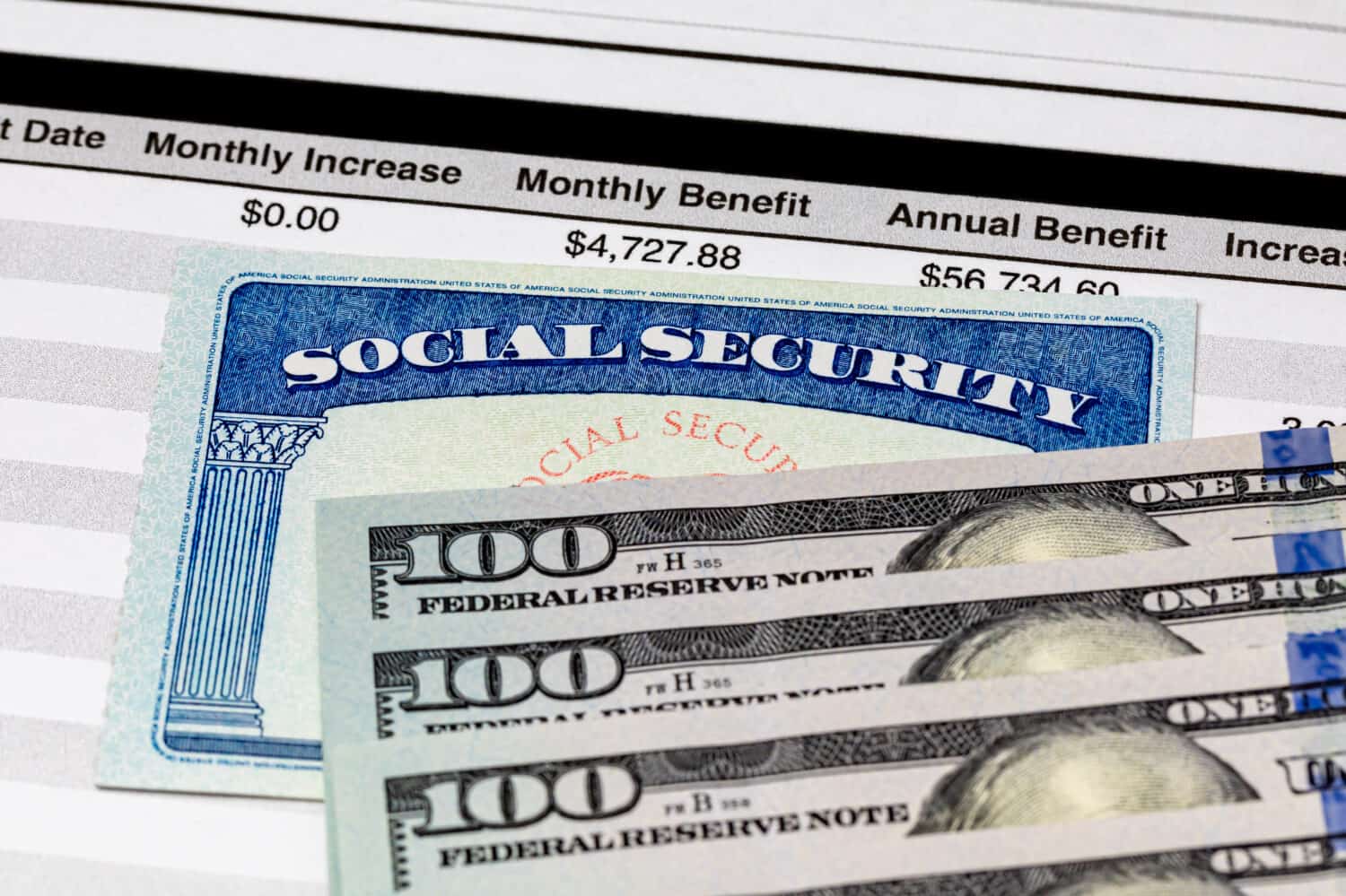
Key Takeaways:
- COLA will increase Social Security benefit payments, requiring higher funding each year.
- Currently, the Full Retirement Age is also slowly rising.
- Social Security’s funding is in danger. Increased payroll taxes and adjusting income caps may be necessary.
- Read “2 Dividend Legends to Hold Forever” to prevent you from relying on Social Security alone for retirement.
Social Security’s future is far from certain. The SSA projects that by 2035, taxes will pay for less than 75% of the promised benefits.
To counteract this, changes are very likely in the program’s future.
What exactly will these changes look like? That’s exactly what we’ll predict below.
Proposed Changes

Recent legislative proposals and policy discussions have gone in tons of different directions. But there are a few changes that are more likely than others.
Here’s a closer look at the key areas under consideration.
1. Benefit Adjustments

One of the most likely changes involves adjustments to Social Security benefits.
But it probably isn’t what you think:
Instead of focusing on lowering benefits to make the programs cheaper, most proposals raise the benefits. For example, some advocates are pushing for a more generous cost-of-living adjustment (COLA) to ensure that benefits maintain their purchasing power over time.
Currently, the COLA does increase the Social Security benefit each year. The estimated COLA for 2025 is projected to be around 3.1%, reflecting inflation. Therefore, all benefits will be raised by 3.1% next year.
2. Eligibility Criteria

Eligibility criteria for Social Security are also under review, with specific changes set for 2025. The full retirement age (FRA) is gradually increasing for those born between 1955 and 1960 as part of an ongoing effort to adjust for longer life expectancies.
In 2025, the full retirement age will be 66 years and 10 months, up slightly from the 2024’s FRA of 66 years and 8 months.
3. Funding

Addressing Social Security’s long-term funding challenges is a central focus of ongoing reforms. With the program facing shortfalls in the coming decades, it doesn’t look too good for future retirees.
For 2025, the federal government has budgeted approximately $1.3 trillion for Social Security, reflecting a slight increase from the $1.28 trillion allocated in 2024.
This increase is required as more people retire and COLA increases payouts. It’s likely that funding will need to increase every year, especially if inflation continues to rise.
Implications

These proposed changes have far-reaching effects on both recipients and taxpayers.
Let’s take a look at these potential impacts:
1. For Recipients

These proposed benefit adjustments could bring both benefits and hardship to recipients of Social Security.
Increased benefits may provide more financial stability. Six to 8 million adults over 65 are living in poverty, which is over 10% of all adults 65 or older. Increased Social Security could seriously impact them.
However, increasing benefits could make the future of Social Security even more bleak.
But it gets worse:
Any changes can seriously impact someone’s retirement plan. When you’ve planned to rely on Social Security as a portion of your retirement income, even slight changes can derail everything. That’s one reason COLA is somewhat predictable and cannot lower payments – only increase them.
2. For Taxpayers

Workers contribute to Social Security through their payroll taxes, and these may need to be increased to counteract funding problems. Adjustments such as increasing payroll tax rates or raising the income cap on taxable earnings could result in higher contributions from taxpayers.
While these are designed to keep Social Security alive, they also influence a worker’s take-home pay (and retirement plans).
If workers can’t save as much towards retirement, they may be forced to rely more heavily on Social Security – which just perpetuates the cycle.
3. For the Economy

Social Security has an impact on the economy as a whole, too. Adjustments to benefits and eligibility could impact:
- Consumer spending
- Savings rates
- Retirement planning
For instance, let’s say that there is a delay in retirement eligibility. This could impact labor dynamics and savings behaviors. People may retire later, limiting job access to the younger generation. People may also save less since they’d have more time before retirement.
Of course, Social Security’s financial health also impacts economic stability. The program plays a crucial role in reducing poverty among older adults.
Without it, many would suffer.
Navigating the Future of Social Security

So, what does all this mean for you?
Well, as the landscape of Social Security evolves, it’s important that you evolve with it. Any of these changes could change how the program functions, which can affect your retirement or even your taxes right now.
Even if you aren’t receiving Social Security yet, it’s vital to plan ahead.
Are You Still Paying With a Debit Card?
The average American spends $17,274 on debit cards a year, and it’s a HUGE mistake. First, debit cards don’t have the same fraud protections as credit cards. Once your money is gone, it’s gone. But more importantly you can actually get something back from this spending every time you swipe.
Issuers are handing out wild bonuses right now. With some you can earn up to 5% back on every purchase. That’s like getting a 5% discount on everything you buy!
Our top pick is kind of hard to imagine. Not only does it pay up to 5% back, it also includes a $200 cash back reward in the first six months, a 0% intro APR, and…. $0 annual fee. It’s quite literally free money for any one that uses a card regularly. Click here to learn more!
Flywheel Publishing has partnered with CardRatings to provide coverage of credit card products. Flywheel Publishing and CardRatings may receive a commission from card issuers.
Thank you for reading! Have some feedback for us?
Contact the 24/7 Wall St. editorial team.

